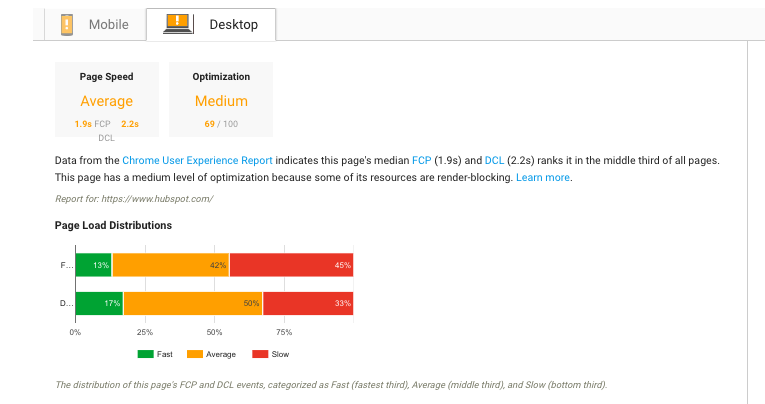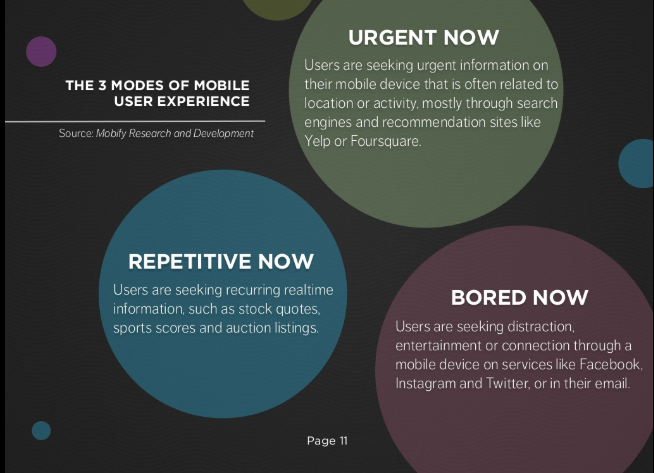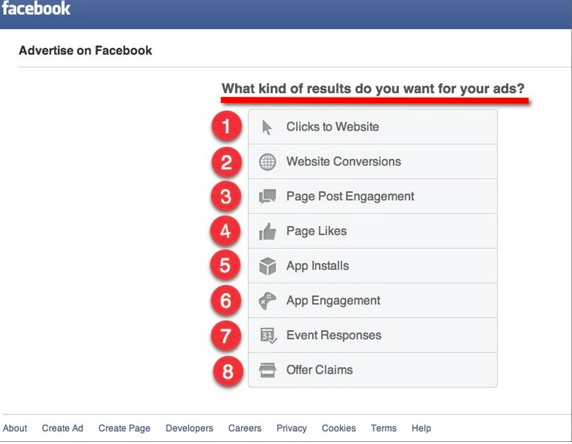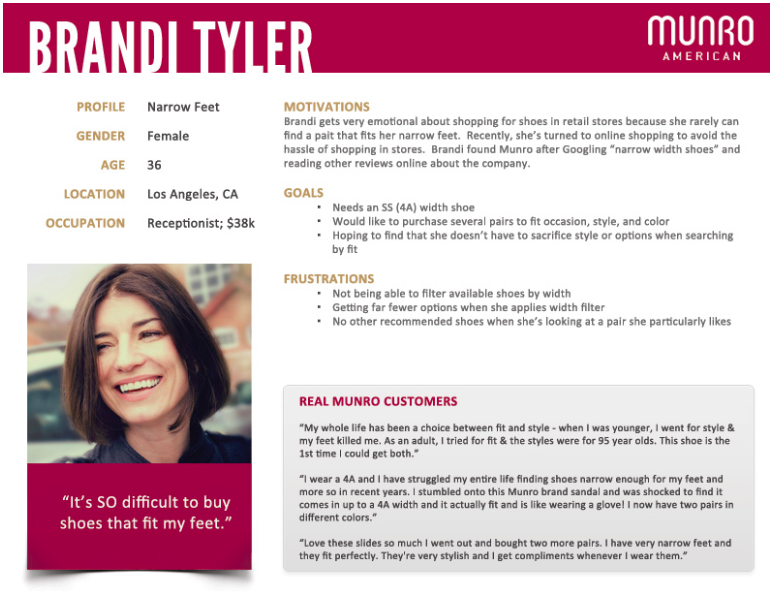Broader doesn’t always mean better.
At least that’s the case when it comes to leads. While it’s super exciting to see that your traffic is up, or that people are actually reading your content, what matters most is whether the people you’re attracting are potential customers who see value in what you have to offer.
Attracting the wrong people to your site can damage your SEO efforts, hurt your reputation, and tap into your bottom line. Essentially, speaking to the wrong demographic or failing to represent yourself correctly spells big trouble for growth and your fate as a company.
Think we’re kidding? Keep reading to see why nailing lead generation is the first step on the road to success. Here are six ways to get those high-quality eyeballs directly to your site.
1. Is Your Site Fast Enough?
Here’s a fact: roughly 79 percent of customers who are unhappy with a website are unlikely to visit that site again. Unfortunately, even if your site is just a little too slow, you risk turning away customers that would otherwise want your product or service under better circumstances.
According to a survey, about 40 percent of people leave a website if it fails to load within 3 seconds, and it just gets worse from there. If your site is slow, you could see some serious damage to your bottom line.
To get a sense of how your site stacks up in Google’s ranking system, you can check this out with Google’s Page Speed test in about 30 seconds.

2. Make Sure Your Site is Mobile-Optimized
Optimizing for the “mobile” user is vital in this day and age. Which should come as no surprise–we’re always glued to our phones, scrolling through our news feeds and social media profiles at any given time.

If you want to drive sales, you have to place yourself in front of the widest audience possible. With mobile, the numbers are staggering. Because nearly half of all web traffic is mobile, there’s a huge opportunity to discover new products and services on the go–especially on social.
Most people scroll through their feeds and if they click on your website, you don’t want them pinching and zooming just to get a sense of who you are.
3. Don’t Try to Convince the Uninterested
Not everyone is a prospect. There, we said it. Look, there are all these old-school sales best practices out there like “never take no for an answer.” Or those people who brag about selling anything to anyone.
But, if you’re doing business online, you want to sell to people who will keep coming back–someone who aligns with your brand and will tell their friends about it or write a positive review.
For example, say you’re selling a vegan subscription box. What’s the point of trying to convert the barbecue enthusiast? Best case scenario, they walk away pleasantly surprised at your goods, but chances are, they won’t buy again.
If you’re selling a business tool like sales software, it’s a little easier to qualify customers. If your product is made for companies that do over $2m in annual sales—you’ll want to weed out companies who aren’t quite there yet.
The $500k company may be interested in the software, but it might be a bit out of their budget. Talking to them might plant the seed for a sale down the line, but chances are, you’re spending a lot of energy before the eventual “no.”
4. With that in Mind, What’s Your Content Up To?
Content is a solution that gets thrown around as a way to drive traffic. The more content you have, the more potential to you have to grab more eyeballs that have the potential to click on your website.
The idea is to create a consistent stream of content within your niche.
If you’re running a subscription site for gourmet cooking, your site could feature video explainers on how to poach the perfect egg or cook pork chops that aren’t dry. Or you could blog about recipes and different ingredients. The point is that you should stay in your lane.
Writing content for your food box website means, yes, you should always write about food and related topics, like tools and equipment you should use—TO COOK.
If you start veering out into writing local restaurant reviews, no matter how good these are, the people who read your blog are going to be people in your city looking to give their money to a restaurant, not cook at home.
What’s more is, they’ll click on your website and often, click away.
5. Tread (SUPER) Lightly with Paid Marketing
Paid ads are hard to resist for obvious reasons. For one, they are some of the cheapest and easiest-to-manage ways to get attention on the internet—a band-aid fix for a stagnating lead pool. The problem is, if you don’t understand your audience or have a way to track results, you’re flushing money down the drain. Click To Tweet
People assume that what works on one channel works on every channel, and those folks promoting the same ads on Facebook, LinkedIn, and Instagram end up paying for taking a messaging shortcut.
Instead, get to know the ins and outs of tailoring your message to fit the platform. Then you can start investing in paid ads.
Get a Baseline
Before sinking your marketing dollars into the paid ad pool, you’ll need to get a sense of how much traffic you already have and what percentage of those visitors make a purchase, sign up for a newsletter, or take some other action.
You’re probably already using Google Analytics to keep track of how many visitors you’re getting overall. But to learn where you’ll get the most mileage from your ad spend, see where those customers are coming from.
If people are finding your site on Facebook or Instagram, it may be worth your while to run paid promotions on those channels to amplify your traffic.
If they’re coming from Google, give AdWords a shot. In any case, don’t sink your marketing budget into paid advertising before you’ve established where you stand. Otherwise, you just can’t know whether your ad spend is providing a return on investment.
And Always Be Tracking
The second part of this is finding the ads that work for you. If people click on your Facebook ads, but only .05 percent of that group buys something or joins your email list, there could be a problem with your messaging.
You’ll also need to learn how that Facebook conversion rate compares with your other platforms.
Maybe fewer people read your blog than your social media posts, but 10 percent of readers take an action. If that’s the case, you may want to look into circulating your content on other blogs and media outlets or running paid promotions that link to the blogs.
Maybe your goal isn’t necessarily to get people to buy right off the bat. You might want to attract more blog readers, flesh out an email list, or just increase awareness in general. With Facebook ads, you can set your goal within the platform.

If you can’t track how your ads are performing, you have no business buying them. Hold off until you’ve set your baseline and can track performance once the ads go live. The point is, Google Analytics is a free tool and it can help you get a clear picture of your paid ad ROI.
6. Buyer Personas Are Super Essential
A lot of companies run meetings geared at building these buyer personas–or a fictional representation of their ideal customer. The downside is, often this is a two-hour meeting where everyone brainstorms around takeout Thai and comes up with this composite person—and that’s that.
This initial strategy meeting should function as a starting point, not the only time you discuss personas. Ask your team members the following questions to get the wheels turning:
- What does their day-to-day life look like?
- What are their goals and pain points?
- What obstacles do they face?
- What are their preferences?
- Are there specific keywords and phrases they enter into Google?
- What’s their professional life like? Think: mid-career, higher-management, makes $75k or $100k per year, CEO or middle manager, etc.
- If B2C, what’s their home life like? Are they single, dating, married with three kids and a dog? Are you going after a specific age/gender/lifestyle? Or is your solution broader than that?
Back to those keywords for a second—your target audience probably isn’t searching for “integrated solutions” or whatever terms you think of your product in.
What phrases do you these folks use most often? If you sell a meat-of-the-month subscription box, make sure to include keywords that span the niche: think dry rubs, BBQ techniques, how to marinade pork chops, not “Texas’ premier grilling meats.”
Once you get a sense of who these people are, you’ll want to talk about their content preferences. Where do these folks hang out on the web?
- What channels are these people using? What are their favorite social platforms, news sources, and blogs they like to read?
- Do they prefer video content or reading a long-form post?
- Would they prefer to be contacted over the phone, text, or email?
- Are you on the right channels? If you’re selling clothing or B2C snacks, Instagram is huge. Professional services–think LinkedIn, Medium, and Facebook.
The second part of this extends beyond making up that fictional perfect customer. They might not exist. Conduct some interviews with existing happy customers—find out what they like and don’t like.
You’ll also want to talk to people that closely fit that persona you’ve come up with and see if things match up. If there’s a disconnect between the people you want and what you have to offer, then something isn’t right.
You may need to tweak your messaging or target a slightly different demographic. Maybe that young, hip audience can’t afford your service. If that’s the case, aim a little older.
You Don’t Have to Do it All On Your Own
Finally, it’s important to stress how much research you’ll need to do before launching your next big marketing campaign. While you might have this great product, you need to know who you’re selling to, and how to talk to those people–no blindly promoting your brand on social media.
From interviewing happy customers to understanding the reason why someone would rather buy from your competitor, Tall Cube can help. We’ll start by determining your baseline conversion rates, and do the in-depth research for you, so you can start getting the hot leads you need to grow your business.
Need help writing your landing page copy? Download the free checklist, Tailoring the Message: Tips for Talking to Your Leads for some pointers.

